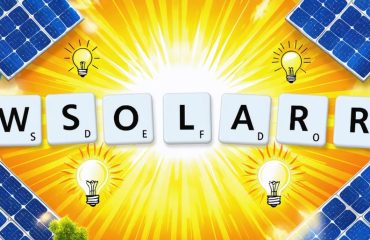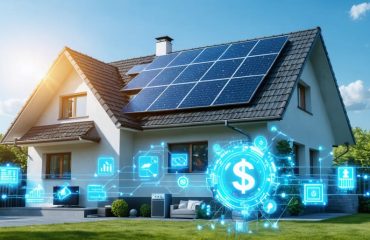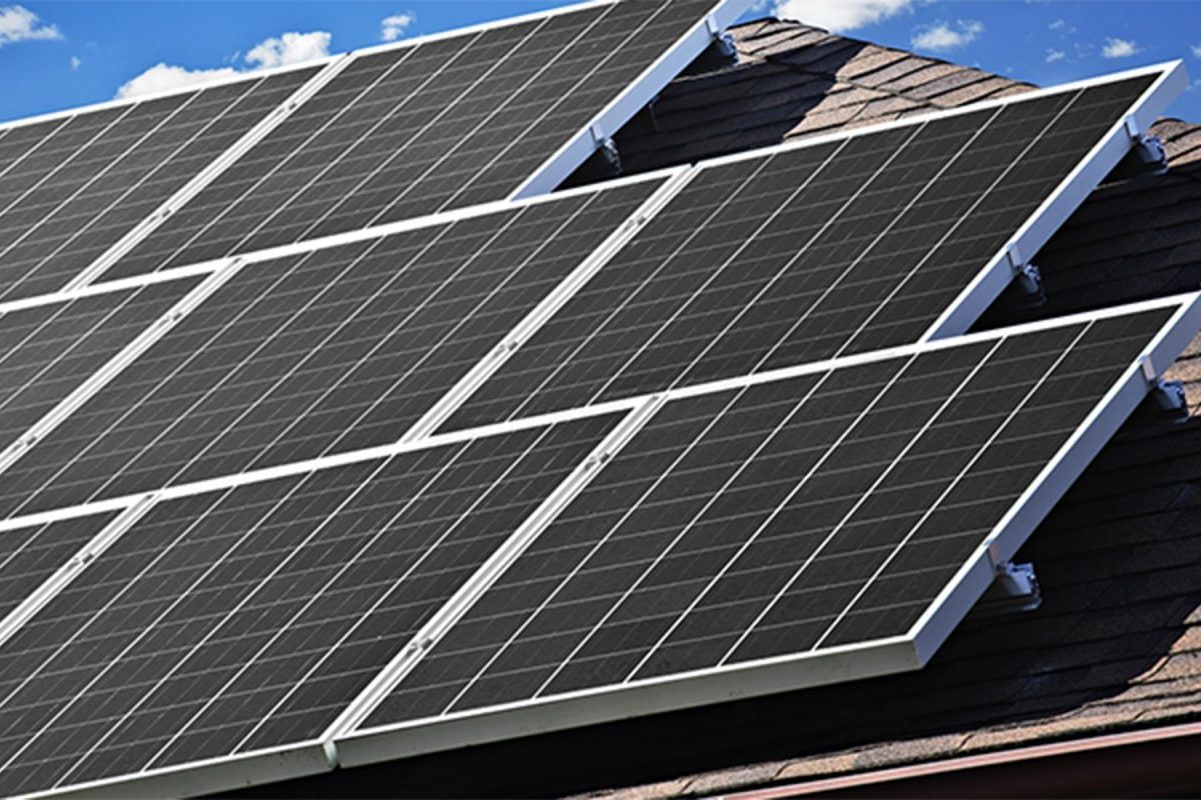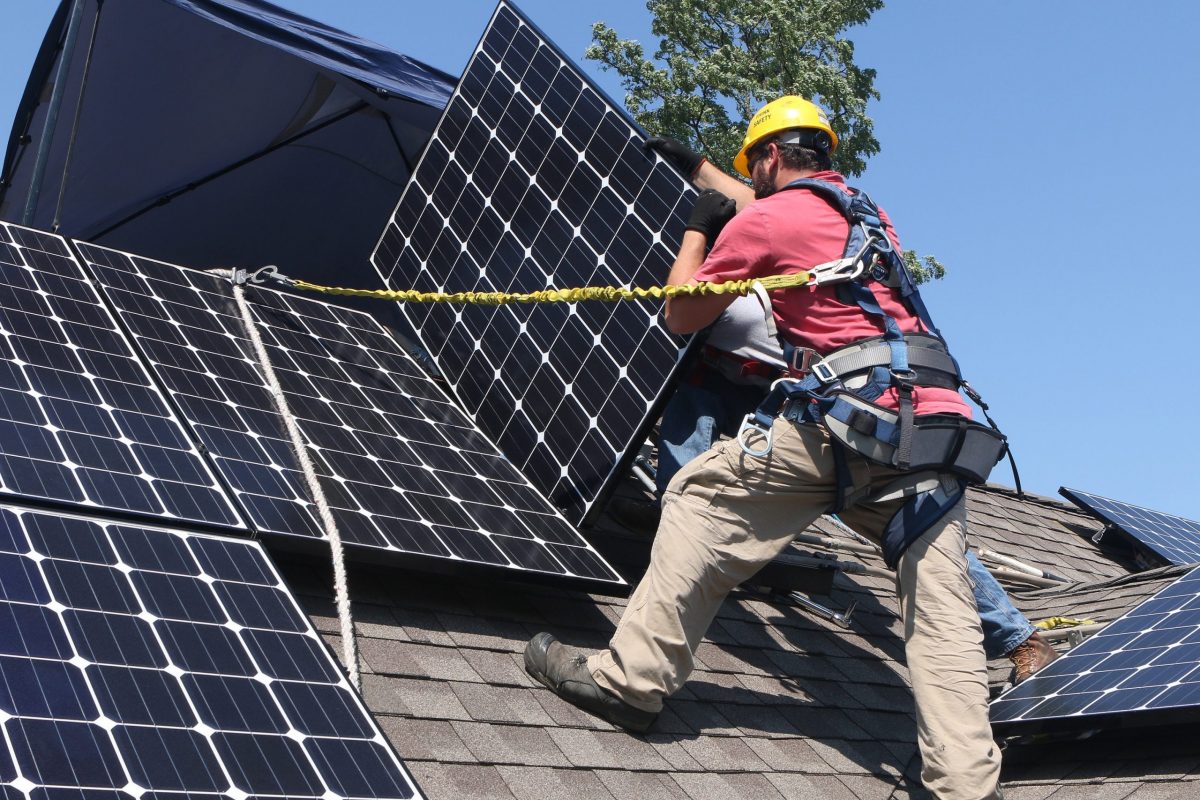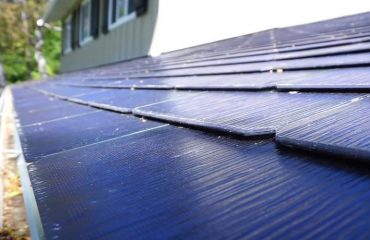Transform your energy future by joining a community solar project – a practical solution that lets you support clean energy and save money without installing panels on your roof. These innovative shared solar farms serve hundreds of local households, offering an average of 10-15% savings on monthly electricity bills while contributing to a greener community.
Local community solar projects make renewable energy accessible to everyone – homeowners, renters, and businesses alike. Simply subscribe to a portion of a nearby solar farm’s output, receive credits on your existing utility bill, and start benefiting from clean energy immediately. No upfront costs, no equipment installation, and no maintenance required.
Whether you’re looking to reduce your carbon footprint, lock in predictable energy costs, or support local clean energy development, community solar provides a straightforward path to participate in the renewable energy revolution. With thousands of projects launching across the country and flexible subscription options, accessing solar power has never been more convenient or affordable.
How Community Solar Makes Clean Energy Accessible to Everyone
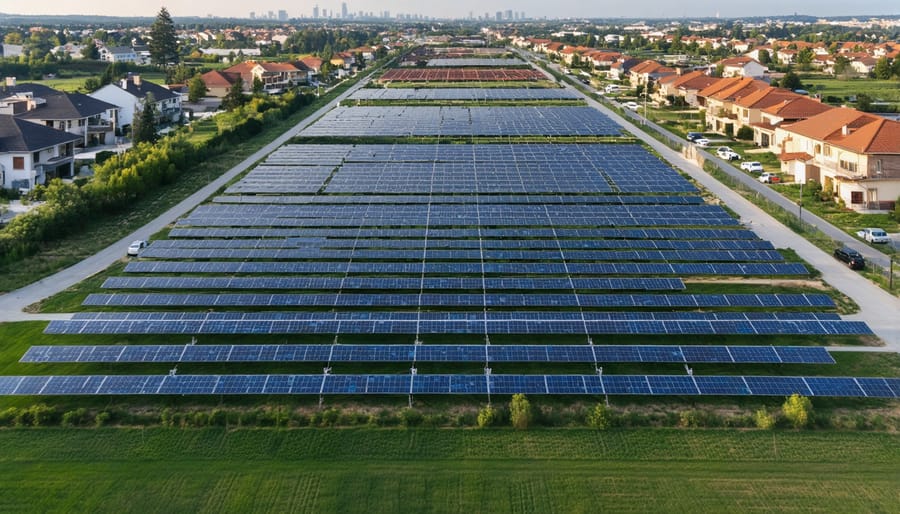
No Rooftop Required: How Community Solar Works
Community solar makes accessing clean energy simple and accessible – no rooftop installation required. Instead of installing panels on your property, you subscribe to a portion of a larger solar farm in your area. When the solar farm generates electricity, you receive credits on your regular utility bill proportional to your subscription share.
The subscription process is straightforward: you choose how many solar panels or what percentage of your electricity usage you want to offset. Your utility continues providing power as usual, but your bill is reduced by the value of the solar credits you earn each month. Most subscribers save 5-15% on their electricity costs.
There’s typically no upfront cost to join, and you can cancel your subscription if you move within your utility’s service area. The solar farm handles all maintenance and operations, so you get the benefits of solar power without any of the installation or upkeep responsibilities. It’s an easy way to support local renewable energy while reducing your monthly expenses.
The Financial Benefits of Going Solar Without Installation
Joining a community solar project offers substantial financial benefits without the upfront costs of installing solar panels on your home. Most participants see immediate clean energy savings of 10-15% on their monthly electricity bills, with some programs offering even greater discounts.
Unlike traditional solar installations that can cost $15,000-$25,000, community solar requires no installation fees, equipment purchases, or maintenance costs. You simply subscribe to a local solar farm and receive credits on your existing utility bill. There’s typically no long-term commitment, and many programs offer flexible month-to-month subscriptions.
The low barrier to entry makes community solar particularly attractive for renters, apartment dwellers, and homeowners whose properties aren’t suitable for rooftop panels. Most programs have no credit score requirements and minimal paperwork to enroll. You maintain your current utility service while benefiting from reduced energy costs, making it a risk-free way to support renewable energy while saving money.
Finding Community Solar Projects in Your Area
Local Solar Farm Locations and Availability
Finding a local community solar project has become easier than ever, thanks to several online resources and databases. Start by checking community solar programs in your state through the Department of Energy’s database or your state’s energy office website.
Most utility companies now maintain lists of approved community solar projects in their service areas. Contact your electricity provider directly or visit their website to explore available options. Additionally, several third-party platforms like EnergySage and SolarReviews offer user-friendly tools to locate and compare local solar farms.
To check your eligibility, you’ll typically need to:
– Verify that you’re in a participating utility’s service area
– Confirm your average monthly electricity usage
– Provide proof of residency
– Have a good utility payment history
The availability of community solar projects varies by location, with some areas having waiting lists while others actively seeking new subscribers. Many programs accept both homeowners and renters, making solar energy accessible to nearly everyone. If there aren’t any immediate openings in your area, don’t get discouraged – new projects are constantly being developed, and you can usually join a waiting list for upcoming installations.
Remember to review multiple projects if available, as subscription terms and potential savings can vary significantly between different solar farms.
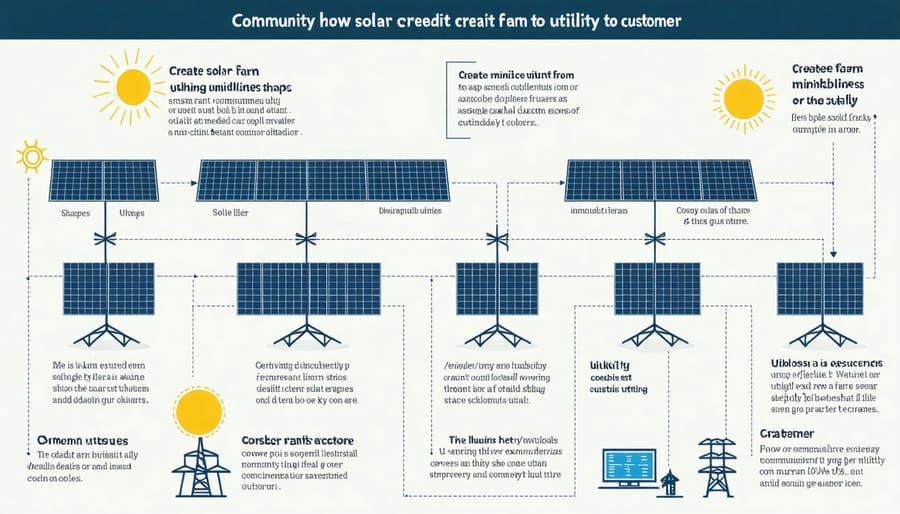
How to Compare Community Solar Options
When comparing community solar options, start by examining the subscription terms and pricing structure. Look for projects that offer monthly savings of 5-15% compared to your current utility bills, with flexible contract lengths that suit your needs. Many providers offer month-to-month agreements, while others may require longer commitments.
Consider the project’s location and size. While the panels don’t need to be on your property, choosing a nearby project can help support your local community. Larger projects often provide more stable energy production and potentially better savings.
Payment models vary between providers. Some require upfront payments, while others operate on a pay-as-you-go basis. Look for programs with no upfront costs and clear billing structures. Make sure to understand how credits appear on your utility bill and how savings are calculated.
Check the provider’s reputation and track record. Read customer reviews, verify their experience in the industry, and ensure they offer responsive customer service. Ask about their monitoring systems and how they handle maintenance issues.
Examine cancellation policies and transfer options. The best programs offer flexibility if you move or need to end your subscription early. Some providers will help transfer your subscription to your new address or to another subscriber.
Finally, review any additional benefits offered. Some programs provide energy monitoring apps, regular performance reports, or community rewards programs that can enhance your overall experience.
Starting Your Community Solar Journey
Enrollment Made Simple
Joining a community solar program is easier than you might think. The enrollment process typically takes just a few simple steps, and many providers offer online registration that can be completed in minutes.
Start by reviewing your current electricity bill to understand your average monthly usage. Next, find a community solar project in your area and select a subscription plan that matches your needs. Many providers offer flexible options, and some even provide access to solar energy grants to help offset initial costs.
Once you’ve chosen a plan, you’ll need to provide basic information like your contact details and utility account number. The provider will then handle all necessary paperwork with your utility company. After enrollment, you’ll start receiving solar credits on your regular electricity bill, typically within 1-2 billing cycles.
There’s usually no upfront cost, and most programs allow you to cancel with proper notice. You’ll continue receiving power through your existing utility company – the only change you’ll notice is the savings on your monthly bill.
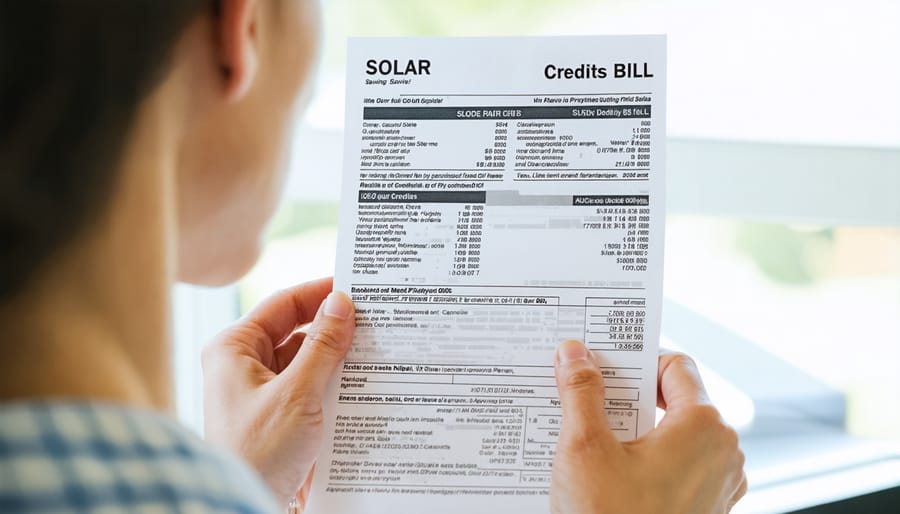
What Happens After You Join
Once you’ve enrolled in a community solar project, you’ll start receiving two monthly statements: your regular utility bill and a separate solar credits statement. Your utility company will continue sending your standard electricity bill, but you’ll notice new solar credits applied to it, typically reducing your total energy costs by 5-15%.
The billing process is straightforward: you pay for your share of the solar energy at a discounted rate, and these credits automatically appear on your utility bill. Most providers offer online portals where you can track your solar production, monitor savings, and view detailed statements.
Beyond the monthly savings, you’ll enjoy ongoing benefits like contributing to local clean energy production and reducing your carbon footprint. Many programs offer flexible terms, allowing you to transfer or cancel your subscription if you move. You’ll also receive regular updates about your solar farm’s performance and its environmental impact, helping you understand exactly how your participation benefits both your wallet and the planet.
Additionally, some providers offer loyalty rewards, referral bonuses, and community perks as you continue your membership.
Common Questions About Community Solar
Many people have questions when first learning about community solar, so let’s address the most common concerns. First, you don’t need to install anything on your property – the solar panels are located at a separate facility. You’ll continue receiving electricity through your regular utility company, but you’ll get credits on your bill for your share of the solar production.
Another frequent question is about cost savings. Most community solar subscribers save 5-15% on their electricity bills, with no upfront costs. The exact savings depend on your location and the specific project terms, but providers typically guarantee some level of savings.
Many wonder about commitment length. While traditional solar installations require 20+ year commitments, community solar subscriptions are usually more flexible, with terms ranging from month-to-month to a few years. If you move within your utility’s service area, you can usually take your subscription with you.
What about maintenance? As a subscriber, you’re not responsible for any equipment maintenance or repairs – the project developer handles all of that. You simply receive the benefits without any of the hassles of ownership.
Weather is another common concern. While solar production varies with weather conditions, your savings are calculated based on annual production estimates, helping to smooth out seasonal variations. Most programs also have guaranteed minimum production levels.
Enrollment is straightforward – you’ll need your utility bill and basic contact information. There’s typically no credit check required, making community solar accessible to most utility customers.
Community solar projects offer an accessible path to clean energy adoption while providing significant cost savings and environmental benefits. By joining a local community solar farm, you can reduce your carbon footprint, support renewable energy development in your area, and potentially save 10-15% on your electricity bills – all without installing panels on your property. Take the first step today by researching available projects in your area and comparing subscription options. Whether you’re a homeowner or renter, community solar makes it possible for everyone to participate in the clean energy revolution while building a more sustainable future for your community. Don’t wait to start enjoying the benefits of solar power – explore your local community solar opportunities now.



